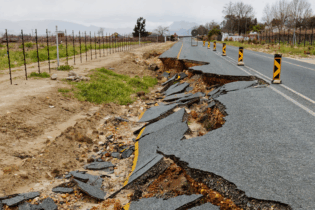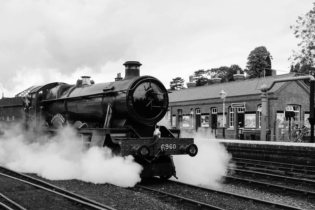The Passenger Rail Agency of South Africa (Prasa) plans to buy thousands of new trains – with most manufactured locally – and is refurbishing old coaches, while revamping and modernising stations and signalling, Lucky Montana, Prasa chief executive says.
Briefing the National Council of Provinces’ (NCOP) select committee on public services on Tuesday, Montana said a preferred bidder for the building of new passenger coaches would be announced in November and he expected the new train sets to be running in 2014. This follows a request for proposals put out by Prasa in April for local companies to outline to Prasa the design of a new train. A feasibility study had been conducted which noted that the country required 7 224 modern coaches over 20 years would need to be purchased, he said. He believed the country had to use this investment to revitalise its local industry, rather than close a speedier deal to buy the trains overseas. A condition had been set that 65% of components must be manufactured in South Africa and Montana expected the manufacture of train sets to create about 75 000 jobs. The local manufacture of coaches would also boost the number of artisan skills in South Africa. A BEE programme for the building of new coaches would be announced shortly and Montana assured the committee that there would be a “huge stake for black businesses” – up to 40%. But he stressed that black businesses that participated in the new train building programme, would have to be real black business owners that will be involved in the manufacturing and supply of parts themselves – rather than BEE investors that take a cut in a large company, but are not involved directly in the work itself. Workers, disabled people and women must also be involved, he said. Prasa is also refurbishing hundreds of coaches a year and about 15% of all train sets had been refurbished so far, he said, at a cost of about R7 million per coach. This financial year will see the overhauling of 530 coaches, at a cost of R2 billion, up from 200 coaches a year a few years ago. Added to this, Prasa would invest R7 billion into a modern signalling system and Siemens had already been appointed to carry out some of the work. Montana said the introduction of the railway police in 2006 had helped to reduce crime by 40%. Today the biggest concern for passengers was no longer crime, but improved on-time performance – which in May stood at 82.33% – up from 76% in January. Montana, however, said rail customers could also now receive SMSs to alert them of any problems on their specific route and allowed them to make alternate arrangements if need be. He said human error and not aging infrastructure was the main cause of train accidents – which he pointed out was surprising when considering that the train sets and systems were so old. To combat human error, Prasa had been carrying out random checks on drivers, brought in train simulators from Germany, which allowed drivers to train in various conditions like fog and rain, and it had increased medical checks particularly to monitor drivers’ eyesight. In the long-term, onboard train protection – an electronic system which takes over from the driver should the driver not take action or should he have a heart attack – would be installed. The accidents last year in Soweto and Pretoria would not have taken place had Metrorail trains been fitted with this system, he said. He said Prasa would carry out 98 station improvement projects this financial year to improve safety and cleanliness. At some stations community members have been trained and have been assisted to set up co-operatives to clean stations. Prasa’s R5 million revamp of Cape Town Station, which was completed two years ago, is generating income for the rail entity, he said.Other stations with gaps between platforms and trains had had their platforms raised.
Several stations were looking cleaner, said Montana, but others not, pointing out that he had fired the seven contractors involved in cleaning at Park Station, after finding the station in an unsightly state. Modern speed gates, to the value of R1.9 billion, were also being set up at various stations across the country ahead of the introduction of a single transport card for bus and train commuters. Prasa is also investing R1.2 billion in a Bridge City Link in KwaZulu-Natal, which will give commuters greater access to Durban and about 60% of the project had been completed. Montana said a R400 million project to double the track at Greenview, in Pienaarspoort, and add three new stations would be completed by next year. Cabinet had also instructed Metrorail to boost service in certain high-priority corridors – including the Khayelitsha-Cape Town, Mabopane-Naledi, Umlazi-KwaMashu corridors. There was no doubt that Prasa would extend rail lines and a number of projects would be developed, including a Johannesburg-Durban High Speed Rail link – to reduce travel time between the two cities to three hours. Other projects include the Moloto Rail Corridor and the Johannesburg-Queenstown-Mthatha Rail project of which R450 million had been committed over the next three years, which included the construction of eight stations. Rail links to Cape Town International Airport and King Shaka International Airport, had also been proposed. There was also a proposal to refurbish the Hammanskraal line, and extend lines to Motherwell, Bara and Daveyton. Motana said South Africa’s passenger rail system faced an aging railway system – with old infrastructure, operating systems, procedures and skills. He echoed remarks made last week by President Jacob Zuma when he used the passenger rail system, that the poor state of the country’s commuter rail resulted in an inability to support economic development. Investment in new rolling stock had not taken place since the 1980s – when the silver trains running between Khayelitsha and the centre Cape Town were bought from Japan. None of the train sets are younger than 16 years – most of them are between 30 and 50 years old and should be scrapped in the next three years. It was uneconomical to run such old train sets, Montana said. The trains were also five times heavier than those in Spain, meaning more energy was needed to pull them. The kind of stations that the country had also needed to be changed – as most were structured around a system of transporting commuters to work in the morning, and back home again at the end of the day. The country also needed a modern signalling system. Montana singled out that on a recent visit to Switzerland, the European country was shifting from moving one new train every three minutes to one train every one minute and 53 seconds – while Metrorail was well behind the curb – even in its efforts to move from one train every 15 minutes to one every seven minutes. South Africa, he said, could no longer afford to fall behind the rest of the world, having already missed several “rail revolutions” – including the introduction of modern commuter trains and high-speed trains in other countries. Source: buanews







